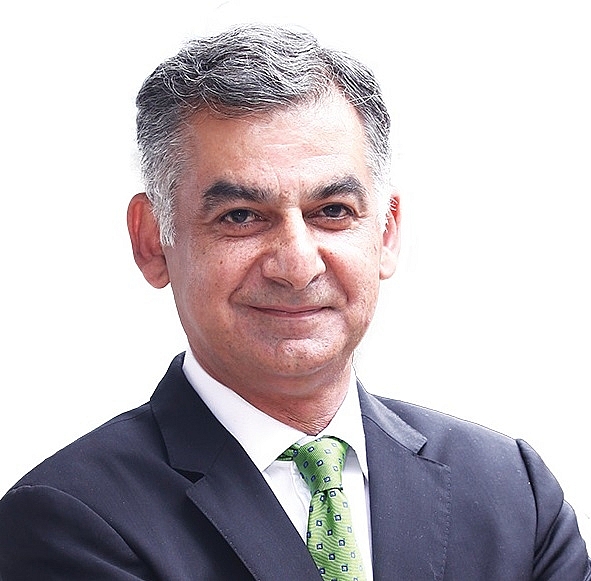Actively powering the ASEAN’s sustainability
 |
| By Nirukt Sapru - CEO, Vietnam and ASEAN South Asia Cluster Markets Standard Chartered |
Despite global economic uncertainties, the prospects for the ASEAN are bright with the region’s GDP expected to surpass $4 trillion by 2023 and potentially become the world’s fourth-largest economy by 2030. Key to the bloc’s future prosperity is greater connectivity – both physical and digital – to pave the way to better integration and increased trade among the bloc’s economies.
The ASEAN’s continued success also relies on sustainable development. From green bonds to syndicated loans, innovative financial solutions are needed to promote sustainable business, employment, and further growth.
One way for the ASEAN to improve trade and connectivity is by working towards fostering the free-trade area that provides equal access to goods and services to the bloc.
The European Union – which is the world’s largest trading bloc and the top trading partner for 80 countries – shows how lower trade barriers, reducing paperwork, and harmonising standards can create benefits for its member countries.
A good starting point could be to harmonise foreign direct investment rules across ASEAN nations. By working towards more synchronised frameworks and regulations around investments, the region becomes more attractive for both ASEAN and foreign-based investors.
Free movement of goods and services will of course require effective physical connectivity. ASEAN governments have identified transport infrastructure as paramount for economic development and increasing trade competitiveness. When last-mile deliveries can efficiently reach every corner of the region, there exists potential for exponential growth in trade and commerce.
What is more, the bloc also needs effective digital connectivity. According to the World Economic Forum, the ASEAN is the world’s fastest-growing internet market, with the bloc’s digital economy projected to add an estimated $1 trillion to regional GDP over the next 10 years.
To facilitate this, ASEAN governments should look to create pan-regional guidelines for the telecom sector so the region can better capture the opportunities of the digital economy.
Notably, these ideas must be underpinned by sustainable development among ASEAN economies and businesses. To achieve this, companies should leverage innovative financial solutions to support their growth and expansion ambitions.
Take the example of Vietnam Electrical Equipment JSC (Gelex). In January, Standard Chartered placed a VND1.15 trillion ($50 million) fixed rate 10-year bond for the renewable energy pioneer to help fund its solar energy project.
As well as funding sustainable development, the bond was also an example of how ASEAN collaboration is helping companies in the region realise their aspirations. The issue was guaranteed by CGIF, a fund set up by the ASEAN and China, Japan, and South Korea, and the Asian Development Bank to support local currency bond issuance.
Strategically situated at the heart of the ASEAN, Vietnam is championing trade and sustainable development through its chairmanship.
With the theme of being “Cohesive and Responsive”, the emphasis is placed on promoting economic integration and connectivity, among others. Importantly, Vietnam is providing leadership in many of these areas.
For instance, according to the Standard Chartered Trade20 Index, Vietnam shows the strongest progress in trade growth potential driven by enhancements to infrastructure and greater ease in doing business.
Meanwhile, government initiatives to support trade and infrastructure include signing a free-trade agreement with the European Union and introducing a new law to encourage public-private partnerships. Vietnam has also set out a plan to transform the country into a leading digital economy in the region by 2030.
Importantly, the country is promoting sustainable growth. For example, the State Bank of Vietnam now requires commercial banks to promote green finance for projects with clear objectives on protecting the environment and encourage environmentally-friendly business activities.
For the ASEAN to truly reach its potential, member states need to continue efforts to enact regional policies that advance the bloc’s vision. It is equally important for governments and business to collaborate closely to leverage the region’s opportunities.
As the only bank operating in all 10 ASEAN markets and with a history of over a century in Vietnam, Standard Chartered understands the role it can play in helping the government reach its chairmanship goals, and businesses to reach their growth potential. The bank continues to focus on innovative financial solutions to support the vision and goals of the region’s businesses.
By improving integration through harmonised regulations on trade and infrastructure, and driving a sustainable approach to development, the ASEAN will create an environment in which people and businesses can thrive.
What the stars mean:
★ Poor ★ ★ Promising ★★★ Good ★★★★ Very good ★★★★★ Exceptional
 Tag:
Tag:
Themes: Drive ASEAN Forward
Related Contents
Latest News
More News
- 72 nations sign landmark Hanoi cybercrime convention (October 26, 2025 | 18:00)
- UN Secretary-General commends Vietnam’s global leadership (October 26, 2025 | 09:00)
- APEC finance ministers convene to tackle regional challenges (October 22, 2025 | 17:31)
- Rewiring global trade: ASEAN’s rise as supply chain hub (October 17, 2025 | 11:40)
- Vietnam attends first World Nuclear Week Forum in Russia (September 26, 2025 | 10:50)
- Vietnam attends 69th session of IAEA General Conference (September 16, 2025 | 10:00)
- ADB, WB pledge over 12 billion USD for ASEAN power grid, renewable energy projects (August 15, 2025 | 14:18)
- Lowy Institute proposes AI-based tobacco control solutions for ASEAN (August 15, 2025 | 14:14)
- Cloud computing policy to position Malaysia as regional hub by 2030 (August 15, 2025 | 14:11)
- Thailand, Cambodia suffer numerous cyber attacks (August 05, 2025 | 16:19)



















 Mobile Version
Mobile Version